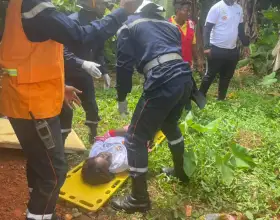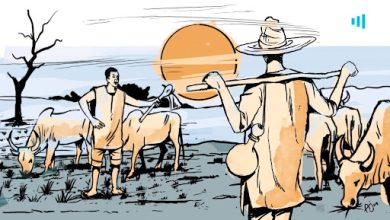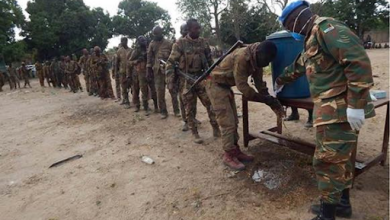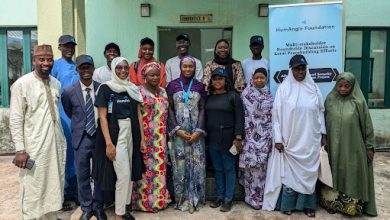$138 Million Needed To Support Drought-Affected Farmers In East Africa – UN
The UN has said a third season of drought driven by La Niña is raising concerns in Somalia, and El Nino in Kenya and Ethiopia which could result in a large-scale hunger crisis if the region's food producing rural communities do not receive adequate assistance set for upcoming agricultural seasons.
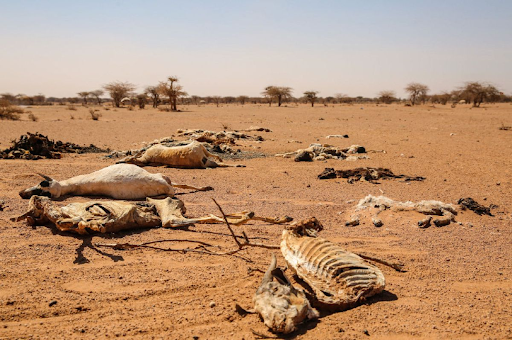
At least $138 million urgent funding is needed to assist 1.5 million vulnerable people in rural communities in the East Africa whose fields and livestocks have been taken by an extended drought, the Food and Agriculture Organisation of the United Nations (FAO) said on Monday, Jan. 17, as it released a comprehensive response plan calling for a range of support for agriculture in the region.
In Ethiopia, Kenya, and Somalia, the worst affected countries hit by drought, estimation from FAO indicates that some 25.3 million people will be facing acute food insecurity by mid-2022.
Rein Paulsen, FAO’s Director of Emergencies and Resilience added that the lean season that has just started is marked by limited grazing opportunities for pastoralist families and their livestock.
In the FAO’s Horn of Africa Drought Response Plan, Paulsen called for over $138 million to help rural communities withstand the latest threat, “with $130 million of that total urgently needed by the end of February to provide time-critical assistance to highly-vulnerable, agriculture-reliant communities in the three most impacted countries.”
“We know from experience that supporting agriculture at moments like this is hugely impactful, that when we act fast and at the right moment to get water, seeds, animal feed, veterinary care, and much needed cash to at-risk rural families, then hunger catastrophes can be averted,” Paulsen added.
Ethiopia has been experiencing its worst drought in years, with the escalating conflict leaving thousands of people displaced and many facing food insecurity. According to the World Food Programme, 9.4 million people are in need of humanitarian food assistance.
Humanitarian needs in Ethiopia have tripled since early 2015 as severe drought in some regions, exacerbated by the strongest El Nino in decades, resulted in successive harvest failures and widespread livestock deaths.
Also, acute malnutrition has risen sharply, and one quarter of Ethiopia’s districts are now officially classified as facing a nutrition crisis. Out of 10.2 million people now requiring urgent humanitarian assistance.
In Somalia, the UN has estimated that people in Somalia are at risk of hunger due to the worsening drought situation. The UN added that natural disaster has been the main cause of displacement in Somalia, a country ranked the most vulnerable in climate change.
More than 3.2 million people in 66 out of the country’s 74 districts are experiencing the cumulative impacts of three consecutive below average rainy seasons, of whom 169,000 people have abandoned their homes in search of water, food and pasture.
According to FEWSNET/FSNAU, the 2021 deyr (October-December) rains have largely failed across most of Somalia which has led to the worst seasonal harvests, death of excess livestock, and high cereal prices. The situation is projected to intensify as Somalia faces the risk of a fourth consecutive failed rainy season in early 2022.
Driven by Climate change, the worst food insecurity is gripping Kenya. The lack of rainfall has wiped out food and water shortages. The worsening drought has significantly hindered crop production and damaged livestock, leaving nearly 2.4 million people in the Arid and Semi-Arid Lands (ASAL) region struggling to eat (IPC Phases 3 and above), including around 368,000 people in emergency levels of hunger (IPC Phase 4), and over 523,000 children under age 5 in urgent need of treatment for acute malnutrition.
Chimimba David Phiri, FAO’s Subregional Coordinator for Eastern Africa (SFE) and Representative to the African Union and to the United Nations Economic Commission for Africa said that it was time to invest more in addressing the drivers of hunger, and build people’s capacity to keep producing even when hit by shocks like drought, so that inevitable shocks do not inevitably descend into humanitarian crises.
“For years we have seen the same cycles of vulnerability and stress undermining agricultural productivity in the rural communities of the Horn of Africa,” Phiri said.
Support Our Journalism
There are millions of ordinary people affected by conflict in Africa whose stories are missing in the mainstream media. HumAngle is determined to tell those challenging and under-reported stories, hoping that the people impacted by these conflicts will find the safety and security they deserve.
To ensure that we continue to provide public service coverage, we have a small favour to ask you. We want you to be part of our journalistic endeavour by contributing a token to us.
Your donation will further promote a robust, free, and independent media.
Donate HereStay Closer To The Stories That Matter

